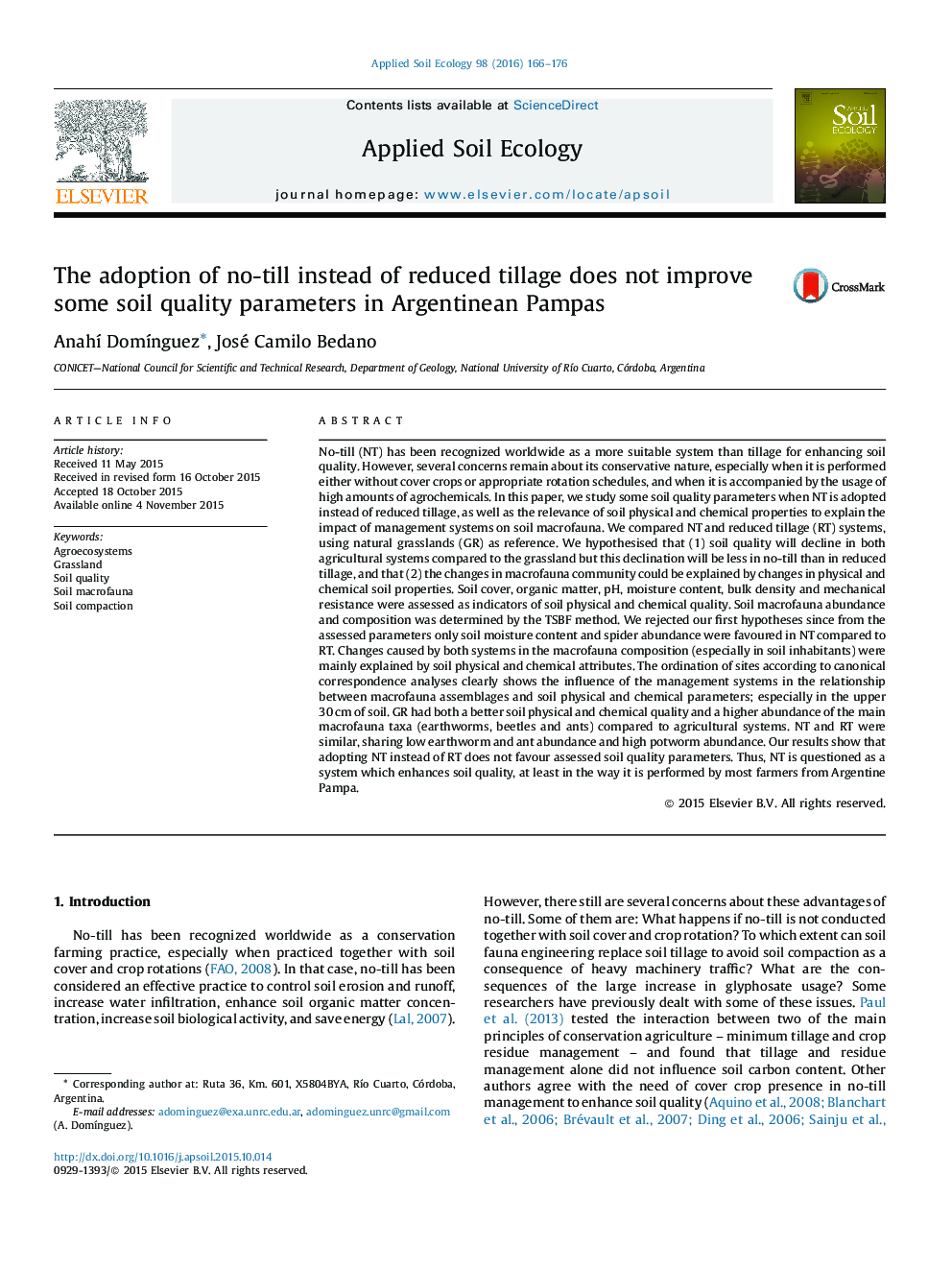| کد مقاله | کد نشریه | سال انتشار | مقاله انگلیسی | نسخه تمام متن |
|---|---|---|---|---|
| 4381869 | 1617785 | 2016 | 11 صفحه PDF | دانلود رایگان |
• We assessed soil quality in no-till system (NT) as performed in Argentinean Pampas.
• Soil quality declined in NT and reduced tillage (RT) compared to natural grassland.
• NT and RT had similar values of soil cover, organic matter, pH and compaction.
• NT and RT had similar earthworm, beetle, ant and portworm abundances.
• NT did not improve soil quality parameters compared to RT.
No-till (NT) has been recognized worldwide as a more suitable system than tillage for enhancing soil quality. However, several concerns remain about its conservative nature, especially when it is performed either without cover crops or appropriate rotation schedules, and when it is accompanied by the usage of high amounts of agrochemicals. In this paper, we study some soil quality parameters when NT is adopted instead of reduced tillage, as well as the relevance of soil physical and chemical properties to explain the impact of management systems on soil macrofauna. We compared NT and reduced tillage (RT) systems, using natural grasslands (GR) as reference. We hypothesised that (1) soil quality will decline in both agricultural systems compared to the grassland but this declination will be less in no-till than in reduced tillage, and that (2) the changes in macrofauna community could be explained by changes in physical and chemical soil properties. Soil cover, organic matter, pH, moisture content, bulk density and mechanical resistance were assessed as indicators of soil physical and chemical quality. Soil macrofauna abundance and composition was determined by the TSBF method. We rejected our first hypotheses since from the assessed parameters only soil moisture content and spider abundance were favoured in NT compared to RT. Changes caused by both systems in the macrofauna composition (especially in soil inhabitants) were mainly explained by soil physical and chemical attributes. The ordination of sites according to canonical correspondence analyses clearly shows the influence of the management systems in the relationship between macrofauna assemblages and soil physical and chemical parameters; especially in the upper 30 cm of soil. GR had both a better soil physical and chemical quality and a higher abundance of the main macrofauna taxa (earthworms, beetles and ants) compared to agricultural systems. NT and RT were similar, sharing low earthworm and ant abundance and high potworm abundance. Our results show that adopting NT instead of RT does not favour assessed soil quality parameters. Thus, NT is questioned as a system which enhances soil quality, at least in the way it is performed by most farmers from Argentine Pampa.
Journal: Applied Soil Ecology - Volume 98, February 2016, Pages 166–176
